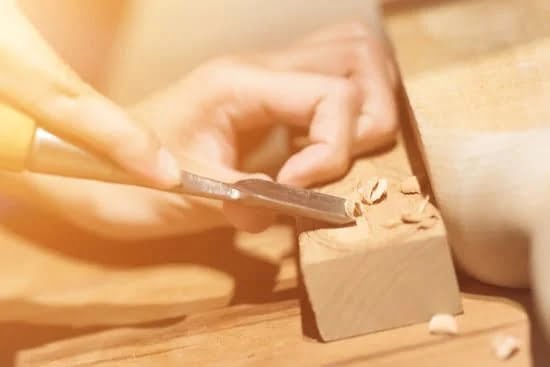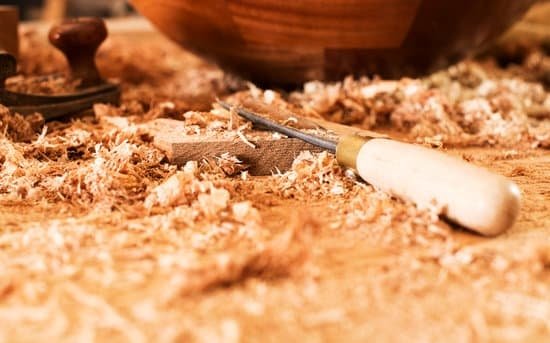Are you looking to explore your creativity and passion for woodworking? Look no further. In this article, we will delve into the world of creative cool woodworking projects that are sure to inspire and captivate both beginners and experienced woodworkers alike. Whether you’re just starting out or looking to challenge yourself with advanced projects, there’s something here for everyone.
Woodworking has a rich history that dates back centuries, and in this section, we’ll take a closer look at its roots and evolution as a craft. From traditional hand tools to modern power tools, understanding the materials and tools essential for woodworking projects is crucial. We’ll provide a comprehensive guide to help you get started on your creative journey.
For those new to woodworking, we have beginner-friendly projects that are easy and fun to tackle. If you have some experience under your belt, we also have intermediate-level projects that will test your skills and creativity. And for the master woodworkers out there, we’ve included advanced projects that showcase true craftsmanship and skill. Ready to take on the challenge?
In addition, we’ll explore innovative ideas for creating cool woodworking projects using recycled or repurposed materials through upcycling and repurposing. Lastly, we’ll share expert tips and techniques to enhance creativity and precision in your woodworking projects. So grab your tools and let’s get started on this exciting woodworking adventure.
History of Woodworking
Woodworking is a craft that has been around for centuries, with its roots dating back to ancient times. The history of woodworking is a fascinating journey that showcases the evolution of tools, techniques, and styles over the years. From the ancient Egyptians using chisels and saws to create intricate furniture and sculptures to the European craftsmen mastering the art of joinery and woodcarving during the Renaissance, woodworking has played a crucial role in shaping various cultures and societies.
Ancient Origins
The origins of woodworking can be traced back to ancient civilizations such as Egypt, China, and Mesopotamia. These early woodworkers developed innovative techniques for shaping wood using primitive tools such as chisels, axes, and adzes. They used their skills to create functional items like furniture, tools, and shelter, as well as decorative objects like sculptures and ornaments.
The Middle Ages and Renaissance
During the Middle Ages in Europe, woodworking became an essential craft for constructing everything from homes to cathedrals. The Renaissance period saw a resurgence in woodworking craftsmanship with a focus on intricate joinery, woodcarving, and marquetry. Skilled craftsmen produced exquisite pieces of furniture, artwork, and musical instruments that showcased their mastery of the craft.
Industrial Revolution
The Industrial Revolution brought significant advancements in woodworking with the introduction of power tools and mass production techniques. This period marked a shift from traditional handcrafted methods to mechanized processes, leading to a wider availability of wooden products.
Understanding this rich history provides insight into the origins of woodworking as a craft and inspires modern woodworkers to continue evolving their skills by embracing traditional methods while also integrating contemporary technologies.
Materials and Tools
When it comes to woodworking, having the right materials and tools is essential for creating stunning and successful projects. Whether you are a beginner looking to dive into this craft or an experienced woodworker, understanding the basics of materials and tools is crucial. This section will provide you with a comprehensive guide to the essential materials and tools needed for woodworking projects.
Wood Materials
The type of wood you use can greatly impact the outcome of your project. From softwoods like pine and cedar to hardwoods such as oak and maple, each type of wood offers different characteristics in terms of color, grain pattern, and durability. Understanding the properties of different woods will allow you to choose the most suitable material for your project, whether it’s for furniture making or decorative items.
Basic Tools
No woodworking project can be completed without a set of basic tools. Essential hand tools include a saw, chisels, hammers, screwdrivers, clamps, and measuring tapes. Power tools such as a drill, circular saw, jigsaw, and sander are also necessary for more complex projects. Having the right tools at your disposal will not only make your work easier but also ensure precision and accuracy in your creations.
Safety Equipment
In addition to materials and basic tools, safety should always be a top priority in woodworking. Protective gear such as safety glasses, gloves, dust masks, and hearing protection are vital when working with wood and power tools. It’s important to invest in high-quality safety equipment to prevent accidents and injuries while engaging in creative cool woodworking projects.
By familiarizing yourself with the different wood materials available, acquiring the necessary tools for cutting, shaping and joining them together effectively along with prioritizing personal safety during your process ensures that any creations are healthy on multiple levels.
Beginner-Friendly Projects
When starting out in the world of woodworking, it’s important to begin with projects that are manageable and enjoyable for beginners. There are numerous creative cool woodworking projects that are perfect for those new to the craft, allowing them to develop their skills and build confidence in their abilities.
One popular beginner-friendly project is building a simple wooden bench. This project typically only requires a few basic tools and materials, making it an ideal starting point for those eager to try their hand at woodworking.
Another great introductory project is creating a wooden picture frame. Not only is this project relatively easy, but it also allows beginners to focus on precision and attention to detail, which are essential skills in woodworking. Additionally, making a cutting board is another fun and practical project for beginners. It provides an opportunity to learn about different types of wood and how they can be used in woodworking projects.
As beginners gain more experience and confidence in their woodworking abilities, they can progress to more intermediate-level projects such as building a small side table or constructing a wooden planter box. These projects offer a bit more complexity while still being manageable for those who are still relatively new to woodworking.
| Woodworking Project | Difficulty Level |
|---|---|
| Wooden Bench | Beginner |
| Picture Frame | Beginner |
| Cutting Board | Beginner |
Intermediate-Level Projects
For those with some experience in woodworking, tackling intermediate-level projects can be a rewarding and exciting endeavor. These projects offer the opportunity to hone skills, learn new techniques, and create truly unique pieces that showcase craftsmanship and creativity. Whether it’s intricate furniture, decorative items, or functional pieces, there are endless possibilities for those looking to take their woodworking skills to the next level.
One popular intermediate-level woodworking project is the construction of a wooden coffee table with intricate detailing. This project allows woodworkers to practice advanced joinery techniques, such as dovetail or mortise and tenon joints, while also incorporating decorative elements like inlay or marquetry. The end result is not only a functional piece of furniture but also a stunning work of art that can serve as the focal point of any living room.
Another challenging yet rewarding project for intermediate woodworkers is the crafting of a wooden jewelry box with drawers and compartments. This project requires careful attention to detail, precision cutting and fitting of parts, and the ability to incorporate small hardware elements like hinges and drawer pulls. The end result is a beautifully crafted piece that serves both a practical purpose and showcases the woodworker’s skill and creativity.
Woodworkers with intermediate-level skills may also enjoy creating hand-crafted wooden cutting boards using a variety of woods and intricate patterns. These projects allow for experimentation with different wood species, grain orientations, and finishing techniques, resulting in one-of-a-kind kitchen essentials that are as beautiful as they are functional.
| Woodworking Project | Description |
|---|---|
| Wooden Coffee Table | A challenging project involving advanced joinery techniques and decorative detailing. |
| Wooden Jewelry Box | An intricate project requiring precision cutting, fitting of parts, and hardware installation. |
| Hand-Crafted Cutting Boards | A project allowing for experimentation with different woods and patterns to create unique kitchen essentials. |
Advanced Projects
Advanced woodworking projects are the epitome of craftsmanship and skill, showcasing the utmost talent and experience in the craft. These projects often require intricate designs, precise measurements, and a deep understanding of woodworking techniques. For those looking to challenge themselves and push their skills to the next level, advanced woodworking projects offer a fulfilling and rewarding experience.
One example of an advanced woodworking project is creating a handcrafted wooden furniture piece. Whether it’s a beautifully detailed dining table, an intricately carved chair, or a hand-crafted cabinet, creating furniture requires precision and expertise. Master-level woodworkers carefully select high-quality wood, meticulously plan out the design, and execute complex joinery and finishing techniques to create stunning pieces that will stand the test of time.
Another example of an advanced woodworking project is crafting wooden instruments such as guitars, violins, or even drums. The construction of musical instruments demands not only technical proficiency but also an understanding of acoustics and sound production. It takes years of practice and dedication to master the art of instrument-making, making it a truly impressive and prestigious woodworking endeavor.
These advanced projects not only showcase the woodworker’s mastery of their craft but also allow them to express their creativity in unique and captivating ways. Aspiring woodworkers can use these projects as an opportunity to hone their skills, challenge themselves with complex designs, and ultimately create stunning works of art that they can be proud of for years to come.
With dedication, patience, and perseverance, master-level woodworking projects have the potential to take one’s craftsmanship to new heights while fostering a deep appreciation for the art of woodworking.
Upcycling and Repurposing
Woodworking is not just about creating something new from scratch; it’s also about finding ways to repurpose and upcycle materials to create unique and innovative projects. Upcycling and repurposing have become popular trends in the woodworking community, as they allow woodworkers to reduce waste and contribute to sustainability efforts. In this section, we will explore some creative ideas for using recycled or repurposed materials to create cool woodworking projects.
One popular idea for upcycling in woodworking is the use of pallet wood. Pallets are often discarded after use, but they can be transformed into beautiful furniture pieces, wall decor, or outdoor structures. With a little creativity and some basic woodworking skills, pallet wood can be turned into stunning coffee tables, headboards, or even garden planters. By giving new life to old pallets, woodworkers can create unique and environmentally-friendly pieces for their homes or businesses.
Another innovative way to repurpose materials in woodworking is by using reclaimed lumber. Salvaged wood from old barns, buildings, or furniture can add character and history to any project.
Whether it’s turning old floorboards into a rustic picture frame or transforming weathered fence boards into a charming planter box, reclaimed lumber offers endless possibilities for creative cool woodworking projects. Not only does repurposing reclaimed wood give it a second life, but it also adds a touch of authenticity and nostalgia to the finished piece.
In addition to pallet wood and reclaimed lumber, there are numerous other materials that can be repurposed in woodworking projects. From old windows and doors to discarded metal fittings or hardware, creative woodworkers can find inspiration in almost any forgotten item. By thinking outside the box and looking at overlooked materials with fresh eyes, woodworkers can bring new life to the old and create truly unique cool woodworking projects that showcase innovation and sustainability.
Tips and Tricks
Woodworking is not only a craft but also an art that requires creativity, precision, and technique. Whether you are a beginner or an experienced woodworker, there are always ways to enhance your skills and take your projects to the next level. Here are some expert tips and techniques to help you elevate your woodworking game:
- Invest in high-quality tools: The foundation of any successful woodworking project is having the right tools. Quality tools not only make the job easier but also ensure accuracy and precision in your work.
- Measure twice, cut once: This classic adage is a golden rule in the world of woodworking. Taking the time to double-check your measurements before making any cuts can save you from costly mistakes and wasted materials.
- Sand like a pro: Achieving a smooth finish on your woodworking projects is essential for a professional look. Start with coarse-grit sandpaper and gradually work your way up to finer grits for a polished result.
In addition, there are several techniques that can help take your woodworking projects to the next level:
- Dovetail joints: Mastering this classic joinery technique can add strength and visual appeal to your furniture pieces.
- Wood carving: Adding intricate carvings or details to your projects can elevate them from simple creations to works of art.
- Wood burning: Experimenting with wood burning tools can allow you to add unique designs or patterns to your woodworking projects, adding a personalized touch.
By incorporating these tips and techniques into your woodworking projects, you can enhance both the creativity and precision of your work, creating truly cool and unique pieces that showcase your skills as a woodworker.
Conclusion
In conclusion, the world of woodworking is a rich and vibrant one, with a long history dating back to ancient times. With the right materials and tools, anyone can embark on their woodworking journey, whether they are a beginner looking for easy projects or an experienced woodworker seeking a challenge. The projects outlined in this guide offer something for everyone, from simple beginner-friendly designs to intricate master-level creations.
Exploring creative cool woodworking projects is not only about creating beautiful and functional pieces; it’s also an opportunity to connect with the rich tradition of woodworking and express one’s individual creativity. Whether it’s crafting a simple shelf or building an elaborate cabinet, each project offers a chance to learn new skills and techniques while honing existing ones.
Additionally, the section on upcycling and repurposing showcases the innovative potential of using recycled materials, inspiring woodworkers to think outside the box and reduce waste in their craft.
Ultimately, the key takeaway is that woodworking is a versatile and rewarding hobby that invites individuals to explore their creativity through hands-on work. From understanding the history of woodworking to mastering advanced techniques, there is always something new to learn and discover in this timeless craft. So why not pick up some lumber and tools and start exploring your own creative cool woodworking projects today?
Frequently Asked Questions
What Woodworking Project Is Most Profitable?
The most profitable woodworking projects are often those that have a high demand and require skilled craftsmanship. Items like custom furniture, cabinets, and unique wooden decor pieces can bring in a good profit due to their customization and labor-intensive nature.
What Makes the Most Money in Woodworking?
Custom woodworking projects that cater to specialized niches or have a high perceived value tend to make the most money. Items like custom-built furniture, artisanal wooden crafts, and intricate wood carvings can command a higher price due to their uniqueness and craftsmanship.
Is Woodworking Still Profitable?
Despite the rise of mass-produced furniture and home goods, woodworking can still be profitable for those with the right skills and business acumen. By specializing in niche markets, offering unique custom products, or providing high-quality craftsmanship, woodworkers can continue to find success and profitability in this field.

Hi everyone! I’m a woodworker and blogger, and this is my woodworking blog. In my blog, I share tips and tricks for woodworkers of all skill levels, as well as project ideas that you can try yourself.





